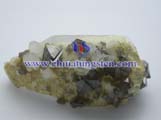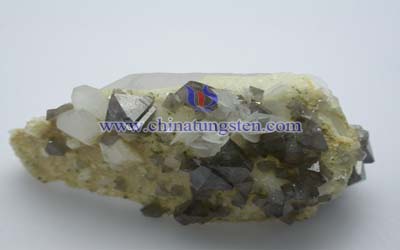Tungsten Market Looks to Rebalance in 2017
- Details
- Category: Tungsten's News
- Published on Thursday, 09 February 2017 10:23

For the last 20 years China has been the world's largest consumer of tungsten. Over this period its share of world tungsten use has increased substantially; from just under 30% in 1996 to nearly 60% in 2016.
Chinese consumption has continued to grow in the face of contracting markets in the rest of the world. The country's tungsten use increased by nearly 8% per year between 2008 and 2016, but it was the only main consuming country to record growth, with the exception of Russia. As a result, world consumption grew by around 3% per year over the period, reaching just over 100,000t contained W in 2016.
Chinese tungsten supply has also grown in line with its consumption. The country is the main producer of primary tungsten, accounting for just under 80% of output in 2016, and also contributes a few thousand tonnes per year to secondary tungsten supply. Very little mine output is exported (<1,000tpy contained W) and domestic mine supply is supplemented with imports, generally in a range of 2,000-5,000tpy of contained W.
Instead, China has focused on increasing its exports of value-added tungsten products. The proportion of exports accounted for by the main intermediate, ammonium paratungstate (APT), has decreased since 2008 along with exports of tungsten products such as oxide and metal. Meanwhile, production and export of goods such as mixed metal carbides and cemented carbides has increased as the country has repositioned itself as a supplier of higher value tungsten products to the world market.

Tungsten demand
In terms of end uses, cemented carbides remained the largest consuming sector in 2016 at more than 50% of total demand. While consumption has continued to grow in the last decade, it has not kept pace with steels and alloys - this sector grew by more than 4%py between 2008 and 2016, mainly propelled by China.
In cemented carbide markets, recent trends have included development of nano-grained products. Nano-sized hardmetals show both improved hardness and fracture toughness. Applications for nano-sized hardmetals include micro tools, for example in drilling printed circuit boards (PCBs). Yet not all focus has been on nano-sized materials; for example, extremely coarse tungsten carbide (WC) and cast WC grades have been successfully used in high-performance drilling tools for oil and gas exploitation, mining and road construction.
One challenge for raw material development is the design of WC powders suitable for use in additive manufacturing - also known as 3D printing. AM using tungsten materials is still at an early stage, with the main challenges including the high melting points of W (3,422°C) and WC (2,870°C); plus the high cost and limited raw material availability.
Steels and alloys continued to be the second largest end use in 2016, primarily in high speed steels and other tool steels. Roughly half of all tool steels consumption is from the transportation sector. In particular, vehicle manufacture dominates consumption of tool steels. The sector has therefore benefitted from the recovery in motor vehicle production since 2010. China is the world's largest manufacturer of motor vehicles, accounting for an estimated 25.8M units in 2016 - or some 31% of the total (93M).
In the mill products sector, consumption of tungsten is estimated to have peaked at over 15,000t contained W in 2012 but has been in decline since this time - primarily because of lower tungsten use in lamps, as uptake of light emitting diodes (LEDs) has increased.
In the period to 2026, LED lamps are likely to gain a much larger share of the global market as phase-out of incandescent bulbs continues and LED prices come into parity with electrical discharge lamps such as compact fluorescent lamps (CFLs). LED lamps previously varied in light colour, efficiency and colour rendering, but such issues appear to have been resolved. LEDs could account for as much as 95% of the lighting market by 2026.
Market outlook
The tungsten market was in a state of oversupply in 2014 to mid-2016, which led to the build up of stocks in both concentrates and APT. In 2017, primary tungsten supply is expected to decline again as the effects of prior mine closures in China and the rest of the world make their impact. This should help the market to rebalance as stocks are drawn down, leading to stabilizing prices.
Longer term, the market is expected to enter a period of improved prices, which could incentivise mothballed operations and new projects to come online, in addition to existing operations ramping up output.
As a result, the market is forecast to move into a slight surplus, therefore increasing stocks again. New projects and ramp up from existing operations is likely to contribute to further stockbuilding at the start of the next decade, which would lead to a price fall. Another period of reduced supply would likely ensue, again causing stocks to fall and prices to improve towards 2026.
| Tungsten Supplier: Chinatungsten Online www.chinatungsten.com | Tel.: 86 592 5129696; Fax: 86 592 5129797;Email:sales@chinatungsten.com |
| Tungsten News & Prices, 3G Version: http://3g.chinatungsten.com | Molybdenum News & Molybdenum Price: http://news.molybdenum.com.cn |



 sales@chinatungsten.com
sales@chinatungsten.com